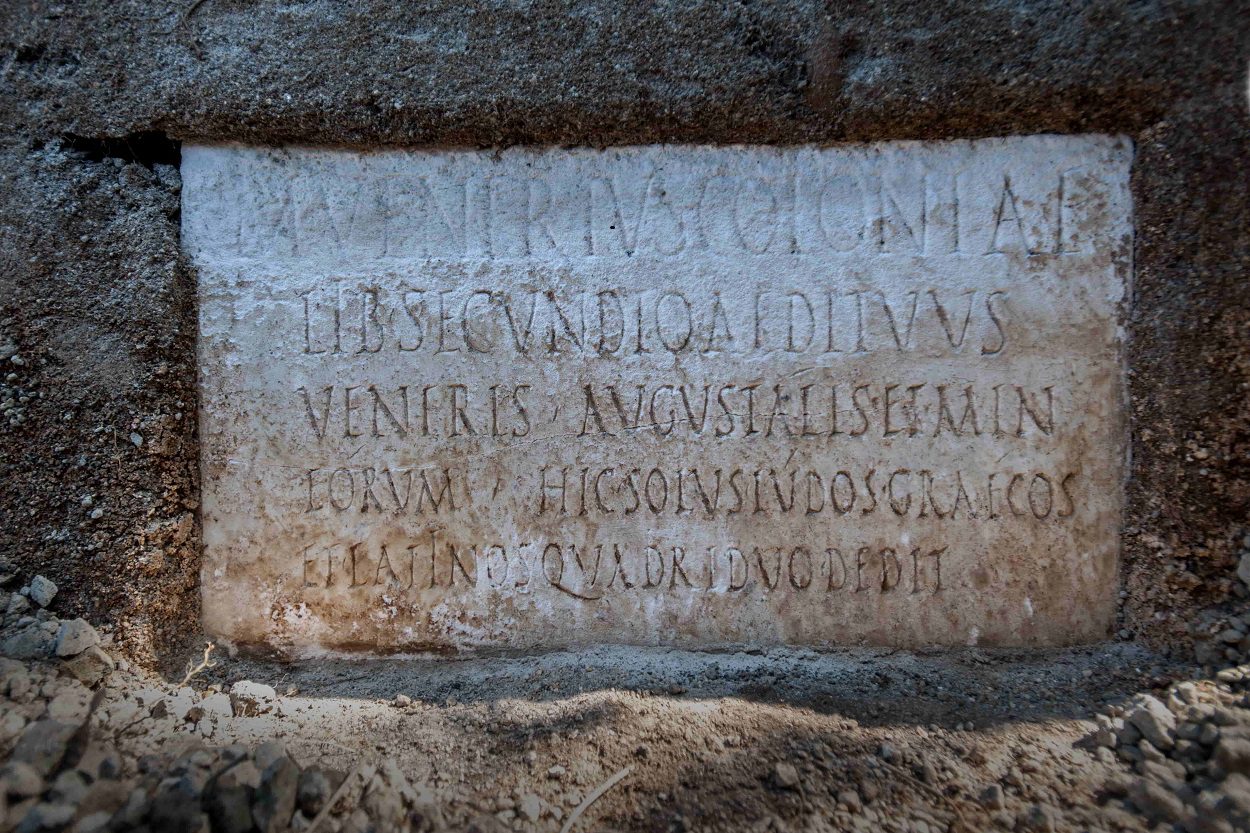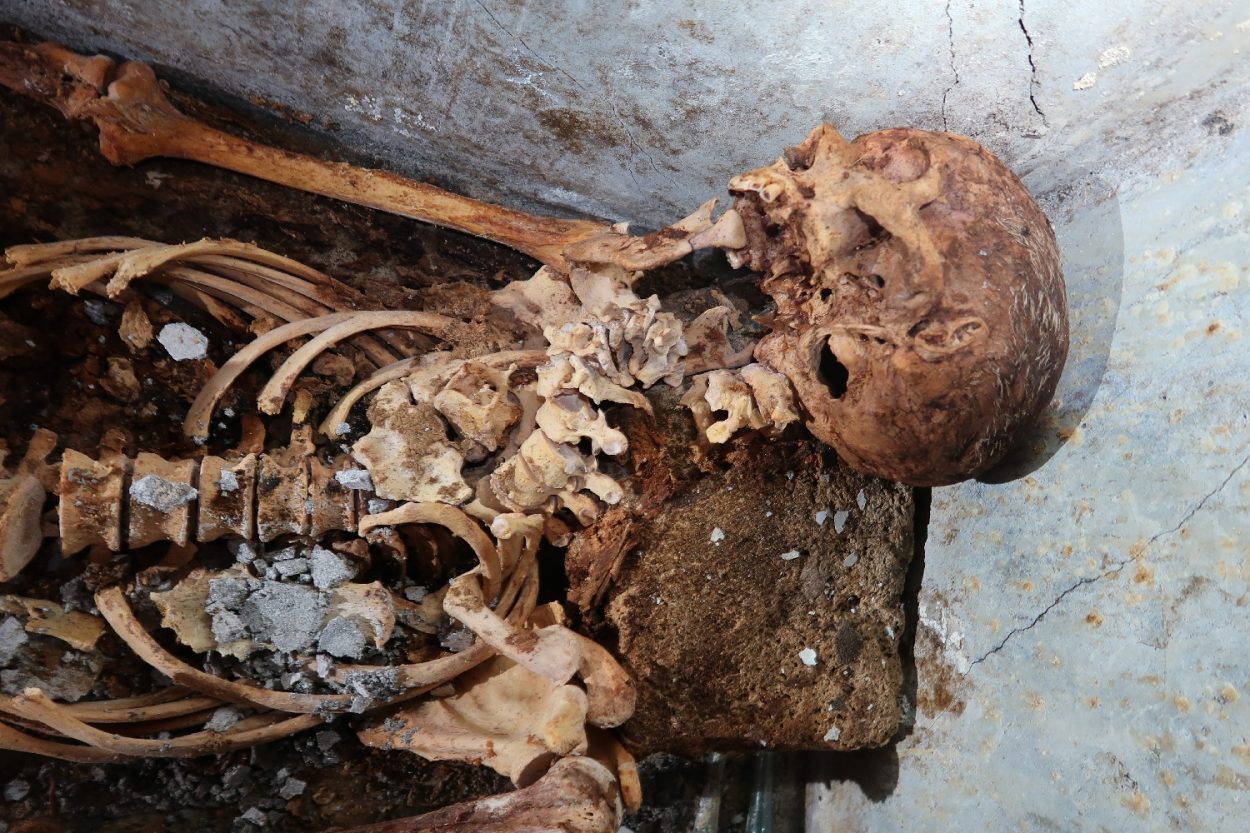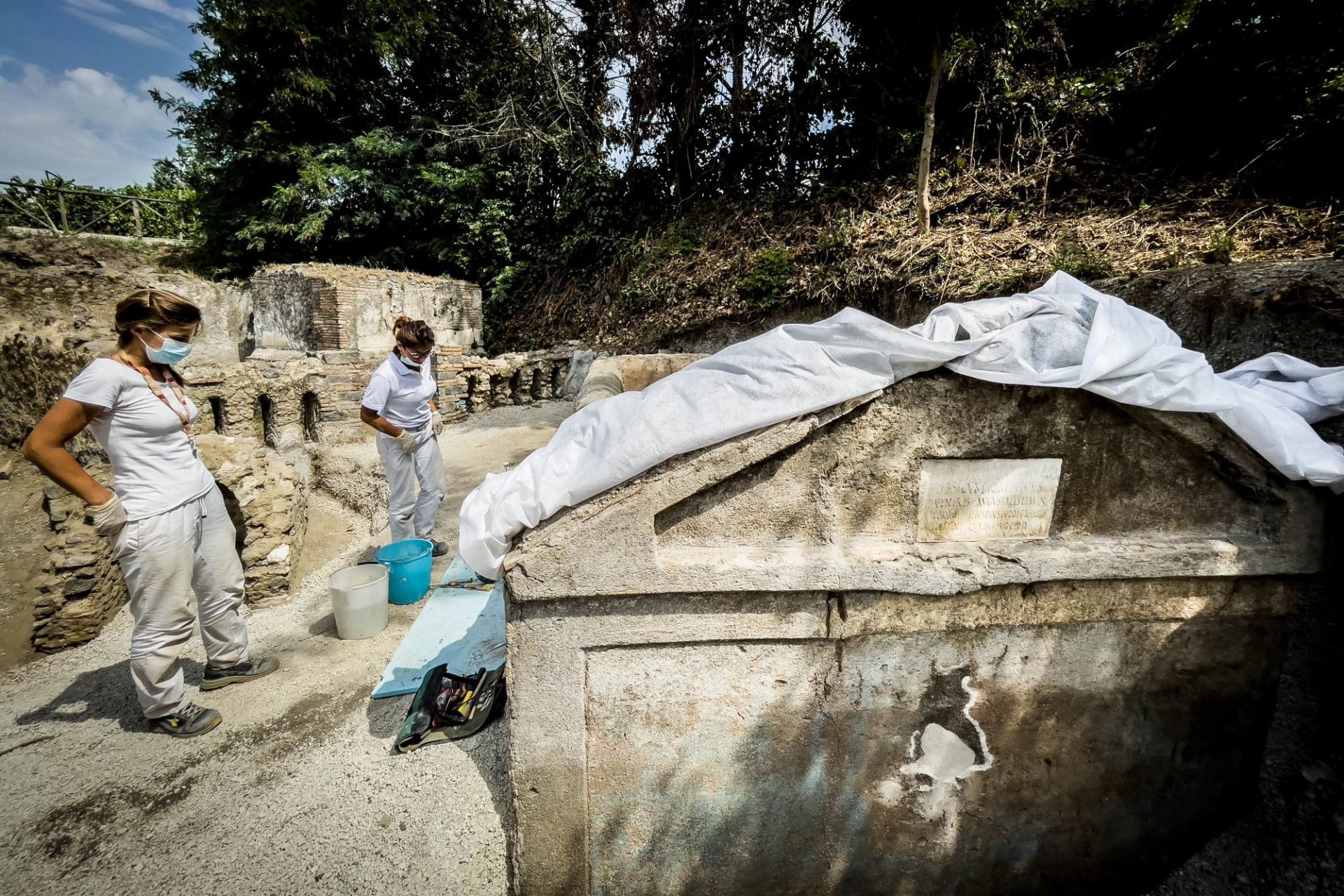Excavations conducted by the Archaeological Park of Pompeii, and the European University of Valencia, have revealed the mummified remains of a high-status Roman at Pompeii.
Pompeii was a Roman city, located in the modern commune of Pompeii near Naples in the Campania region of Italy. Pompeii, along with Herculaneum, and many villas in the surrounding area was buried under 4 to 6 m (13 to 20 ft) of volcanic ash and pumice during the eruption of Mount Vesuvius in AD 79.
The tomb was uncovered during excavations in the Porta Sarno Necropolis area, located to the east of the main urban centre of the city. On a marble slab located on the tomb’s pediment, a commemorative inscription gives mention to Marcus Venerius Secundio, who also appears in the wax tablet archive of the Pompeian banker Cecilius Giocondus.
Marcus Venerius Secundio was a public slave and custodian of the Temple of Venus. Upon being freed, he clearly reached a high-status position in Roman society, both socially and economically (evident by the monumental quality of his tomb), in addition to joining the ranks of the Augustales, or the college of priests dedicated to the Imperial Cult, as the epigraph recalls he “gave Greek and Latin ludi for the duration of four days”.

Director of the Archaeological Park of Pompeii, Gabriel Zuchtriegel said: “It is the first clear evidence of performances at Pompeii in the Greek language, which had previously been hypothesised on the basis of indirect indicators.
Here we have another tessera of a large mosaic, namely the multi-ethnic Pompeii of the early Imperial Age, where Greek, the then lingua franca of the eastern Mediterranean, is indicated alongside Latin. That performances in Greek were organised is evidence of the lively and open cultural climate which characterised ancient Pompeii.”
The deceased was buried in a small cell of 1.6 x 2.4 metres, located behind the main façade, whilst in the remaining part of the wider tomb enclosure there is evidence of cremations in the form of two cinerary urns.

The conditions in the tomb created a hermetically sealed room, preserving the remains which still has traces of hair and even an ear. Furthermore, grave goods have been recovered, including two glass unguentaria and numerous fragments of what appears to be fabric.
“We still need to understand whether the partial mummification of the deceased is due to intentional treatment or not” – explains Professor Llorenç Alapont of the University of Valencia – “analysis of the fabric could provide further information on this. From the sources we know that certain textiles such as asbestos were used in embalming. Even for those like me, who have been specialised in funerary archaeology for some time, the extraordinary wealth of information offered by this tomb, from the inscription to the burials, the osteological finds and the painted façade, is exceptional, which confirms the importance of adopting an interdisciplinary approach, such as that conducted by the University of Valencia and the Archaeological Park during this project”.
The human and organic remains found in the funerary complex of Porta Sarno were transported to the Laboratory of Applied Research at the site of Pompeii, where they have undergone analysis and conservation interventions. At the same time, the Archaeological Park has begun a series of stabilisation interventions, aimed at ensuring the maintenance of the Porta Sarno Necropolis, pending the definition of a broader project aimed at restoration and eventual visitor access to the area.
Header Image Credit : Pompeiisites





